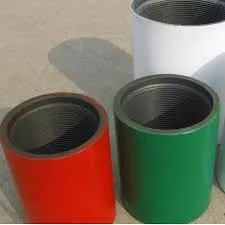- Afrikaans
- Albanian
- Amharic
- Arabic
- Armenian
- Azerbaijani
- Basque
- Belarusian
- Bengali
- Bosnian
- Bulgarian
- Catalan
- Cebuano
- Corsican
- Croatian
- Czech
- Danish
- Dutch
- English
- Esperanto
- Estonian
- Finnish
- French
- Frisian
- Galician
- Georgian
- German
- Greek
- Gujarati
- Haitian Creole
- hausa
- hawaiian
- Hebrew
- Hindi
- Miao
- Hungarian
- Icelandic
- igbo
- Indonesian
- irish
- Italian
- Japanese
- Javanese
- Kannada
- kazakh
- Khmer
- Rwandese
- Korean
- Kurdish
- Kyrgyz
- Lao
- Latin
- Latvian
- Lithuanian
- Luxembourgish
- Macedonian
- Malgashi
- Malay
- Malayalam
- Maltese
- Maori
- Marathi
- Mongolian
- Myanmar
- Nepali
- Norwegian
- Norwegian
- Occitan
- Pashto
- Persian
- Polish
- Portuguese
- Punjabi
- Romanian
- Russian
- Samoan
- Scottish Gaelic
- Serbian
- Sesotho
- Shona
- Sindhi
- Sinhala
- Slovak
- Slovenian
- Somali
- Spanish
- Sundanese
- Swahili
- Swedish
- Tagalog
- Tajik
- Tamil
- Tatar
- Telugu
- Thai
- Turkish
- Turkmen
- Ukrainian
- Urdu
- Uighur
- Uzbek
- Vietnamese
- Welsh
- Bantu
- Yiddish
- Yoruba
- Zulu
Understanding the Importance of Tubing and Casing in Oil and Gas Operations
Tubing and Casing The Backbone of Oil and Gas Production
In the oil and gas industry, the extraction of hydrocarbons from deep below the earth's surface requires a myriad of engineering solutions, with tubing and casing being among the most critical components. These two elements play pivotal roles in the drilling, completion, and production phases, ensuring a safe and efficient extraction process.
Understanding Casing
Casing refers to the series of steel pipes that are installed in the borehole after drilling. Its primary purpose is to stabilize the wellbore, prevent the collapse of the surrounding earth, and isolate the various pressure zones encountered during drilling. Casing also serves to protect freshwater aquifers from contamination by isolating them from the oil and gas production zones.
There are different types of casing, with the most common being surface casing, intermediate casing, and production casing. The surface casing is usually the first layer installed, extending from the surface to a depth that secures freshwater formations from any potential damage. Intermediate casing is used to handle high pressures found at greater depths and often serves to transition the well from shallow to deep formations. Finally, production casing is installed to facilitate the flow of hydrocarbons. It is generally cemented in place to ensure stability and provide a secure conduit for extraction.
The Role of Tubing
While casing is essential for the structural integrity of the wellbore, tubing specifically refers to the pipes installed inside the casing and serves as the conduit for the fluids being produced. Tubing is necessary for the efficient flow of oil, gas, or water from the reservoir to the surface. Unlike casing, tubing is removable, allowing for maintenance and replacement as necessary.
The tubing is typically made from carbon steel or other alloys designed to withstand harsh conditions, including high pressures and corrosive environments. This is crucial because the reservoirs from which oil and gas are produced often contain aggressive fluids that can lead to corrosion and degradation over time.
tubing and casing

The Interplay between Tubing and Casing
The successful operation of a well relies heavily on the effective interaction between tubing and casing. Proper selection and installation of both elements are vital to enhance production efficiency while minimizing the risk of failure. Engineers must carefully consider various factors such as the depths of the well, the characteristics of the formations being drilled, and the specific properties of the fluids being extracted.
Oil wells require careful planning and engineering practices to mitigate risks. For example, if the tubing is not adequately designed to handle the thermal expansion of fluids or the pressures during production, it may lead to tubing failure, resulting in costly downtime and repairs. Additionally, poor cementing practices used between the casing and the surrounding earth can lead to fluid migration, which may compromise the integrity of the well and environmental safety.
Advancements in Tubing and Casing Technologies
The oil and gas industry consistently strives for innovation to enhance the efficiency and safety of operations. Technological advancements in the materials used for tubing and casing have greatly improved their performance. Recent developments include the use of corrosion-resistant alloys and coatings designed to extend the lifespan of tubing and casing in challenging environments.
Furthermore, the implementation of monitoring technologies, such as real-time downhole sensors, allows for better tracking of the conditions within the well. This data helps operators to make informed decisions regarding maintenance and the management of production rates.
Conclusion
In summary, tubing and casing are foundational components of oil and gas production that ensure the safe and efficient extraction of hydrocarbons. The challenges presented by deep reservoir conditions require continuous advancements in engineering practices and materials to optimize their performance. As the industry moves toward more sustainable practices and seeks to reduce environmental impacts, the importance of reliable tubing and casing solutions will only grow. Ultimately, understanding and improving these critical elements will play a vital role in the future of energy production.
-
Tubing Pup Joints: Essential Components for Oil and Gas OperationsNewsJul.10,2025
-
Pup Joints: Essential Components for Reliable Drilling OperationsNewsJul.10,2025
-
Pipe Couplings: Connecting Your World EfficientlyNewsJul.10,2025
-
Mastering Oilfield Operations with Quality Tubing and CasingNewsJul.10,2025
-
High-Quality Casing Couplings for Every NeedNewsJul.10,2025
-
Boost Your Drilling Efficiency with Premium Crossover Tools & Seating NipplesNewsJul.10,2025







